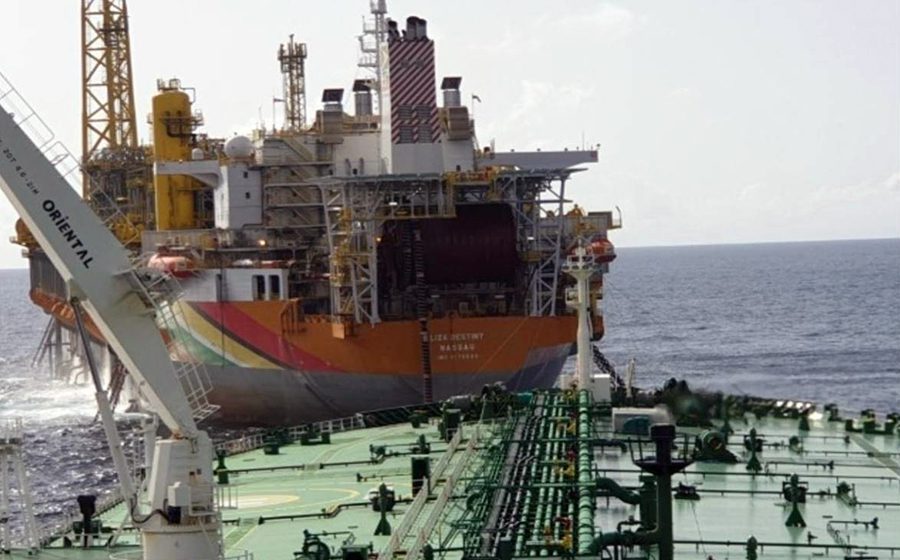Guyana exports could replace 4% of all Russian gas that went to Europe in 2021 – Analyst

An oil tanker approaching the Liza Destiny FPSO offshore Guyana.
Guyana could emerge as a major LNG exporter in coming years as massive hydrocarbon discoveries continue to mount off the country’s coast and output from neighbours such as Trinidad and Tobago continue to decline.
In his most recent OilNOW column published on Friday, Arthur Deakin, Director of Americas Market Intelligence’s energy practice, said with Russia’s discounted oil and liquefied natural gas (LNG) being diverted to Asian buyers, and its gas deliveries to Europe falling by 80%, the world’s energy markets have been forced to shift and recalibrate.
This search for alternative sources of energy is creating major opportunities for countries with the ability to help fill the gap, and Guyana, although just a newcomer to the oil and gas arena, is emerging as one of the better positioned players.
Given the complexity and extensive capital needed to export LNG, Deakin said only two countries currently do so in Latin America: Peru and Trinidad & Tobago. Peru LNG, the consortium responsible for the country’s exports, increased its LNG deliveries by 70% in the first half of 2022—shipments to Europe alone, saw a 46-fold increase. To ensure a constant flow of export revenues, he said the Peruvian government appears to have discarded the renegotiation of the consortium’s Camisea contracts and has encouraged them to export at full capacity of 4.4 MTPA (million tons per annum).
“As the government narrows in on supplying natural gas to the local population, there are no planned increases for LNG exports in Peru,” Deakin pointed out.
Meanwhile, Trinidad and Tobago, on the other hand, saw LNG exports decrease 2% in the first five months of 2022.
“Trinidad is struggling with declining gas reserves due to its mature gas fields, unappealing fiscal terms, and overshadowing discoveries in neighbouring countries,” the analyst pointed out.
Deakin said unless sanctions are lifted on Venezuela, or a major gas discovery is made, both of which are rather unlikely, Trinidad will see a continued decline of its oil and gas industry. Trinidad’s LNG exports, he said, have fallen over 50% since 2010.
“Trinidad’s decline, coupled with Peru’s focus on the domestic market, creates opportunities for new players to enter the LNG export market. Guyana and Suriname, the emerging superstars of the region, could have 13.2 and 10.8 Tcf (trillion cubic feet) of natural gas reserves, respectively, based on AMI’s preliminary estimates,” Deakin said.
Miniscule domestic demand in Guyana and Suriname means that there is plenty of excess gas that can be exported via ships or pipelines, he stated, while pointing out that both countries have direct routes to Western Europe and Northern Brazil.
In Suriname, U.S.-based Phoenix Development Company has partnered with the Port Authority of Suriname to develop a U$1.2 billion LNG liquefaction plant and export terminal with a planned output of 4 MTPA.
“In Guyana, where the total estimated recoverable resources have surpassed 11 billion barrels of oil equivalent, LNG exports could reach nearly 5 MTPA. This volume alone could replace 4% of all Russian gas that went to Europe in 2021,” Deakin said.
As oil and gas deliveries from Russia continue to dwindle, European nations will seek alternative sources of energy. As reported by OilNOW in September, Germany, Europe’s biggest oil consumer, has been scrambling to find new energy sources and this has already seen rare imports in recent months from countries such as Guyana.
